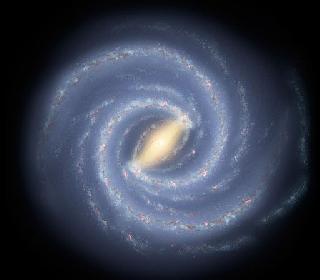
The Milky Way galaxy. Astronomers believe that the healthy, star-forming galaxy will continue to be a strong contributor to new star births. A NASA photo.
LONDON (BNS): A team of international astronomers has noticed a 'cosmic slump' wherein the rate formation of new stars in the Universe has continuously declined over the past 11 billion years.
Undertaking the largest ever study by using the UK Infrared Telescope, the Very Large Telescope and the Subaru telescope, the team of Portuguese, UK, Japanese, Italian and Dutch researchers has found that the rate of formation of new stars in the cosmos is 30 times slower today than what it was at its likely peak of 11 billion years ago.
What's worrying is that this declining trend is set to continue in the future.
As per the accepted model of astronomy, star formation in the Universe began about 13.4 billion years ago, or around three hundred million years after the Big Bang.
Several of these "first stars" - thought to be monsters by today's standard - were probably hundreds of times more massive than our Sun. They aged quickly, exhausted their fuel, and exploded as supernovae within a million years or so.
Lower mass stars, in contrast, continued to enjoy higher longevity and lived for billions of years.
Much of the dust and gas from explosions of the monster stars was recycled to form newer and newer generations of stars. Our Sun, for example, is thought to be a third generation star, and has a very typical mass by today's standards.
The researchers' team, by looking at the light from clouds of gas and dust in the galaxies where stars are forming, assessed that the production of stars in the Universe as a whole has been continuously declining. The rate of star births is now only 1/30th of its likely peak of around 11 billion years ago.
"You might say that the Universe has been suffering from a long, serious "crisis": cosmic GDP output is now only 3% of what it used to be at the peak in star production!", according to the lead author of the study David Sobral of the University of Leiden in the Netherlands.
"If the measured decline continues, then no more than 5% more stars will form over the remaining history of the cosmos, even if we wait forever," the researcher said.
The research suggests that we live in a Universe dominated by old stars. Half of these were born in the 'boom' that took place between 11 and 9 billion years ago and it took more than five times as long to produce the rest.
"The future may seem rather dark, but we're actually quite lucky to be living in a healthy, star-forming galaxy (Milky Way) which is going to be a strong contributor to the new stars that will form.
"Moreover, while these measurements provide a sharp picture of the decline of star-formation in the Universe, they also provide ideal samples to unveil an even more fundamental mystery which is yet to be solved: why?", added Sobral.
The researchers report their findings in the journal Monthly Notices of the Royal Astronomical Society.
 Previous Article
Previous Article Next Article
Next Article














The Indian Air Force, in its flight trials evaluation report submitted before the Defence Ministry l..
view articleAn insight into the Medium Multi-Role Combat Aircraft competition...
view articleSky enthusiasts can now spot the International Space Station (ISS) commanded by Indian-American astr..
view article